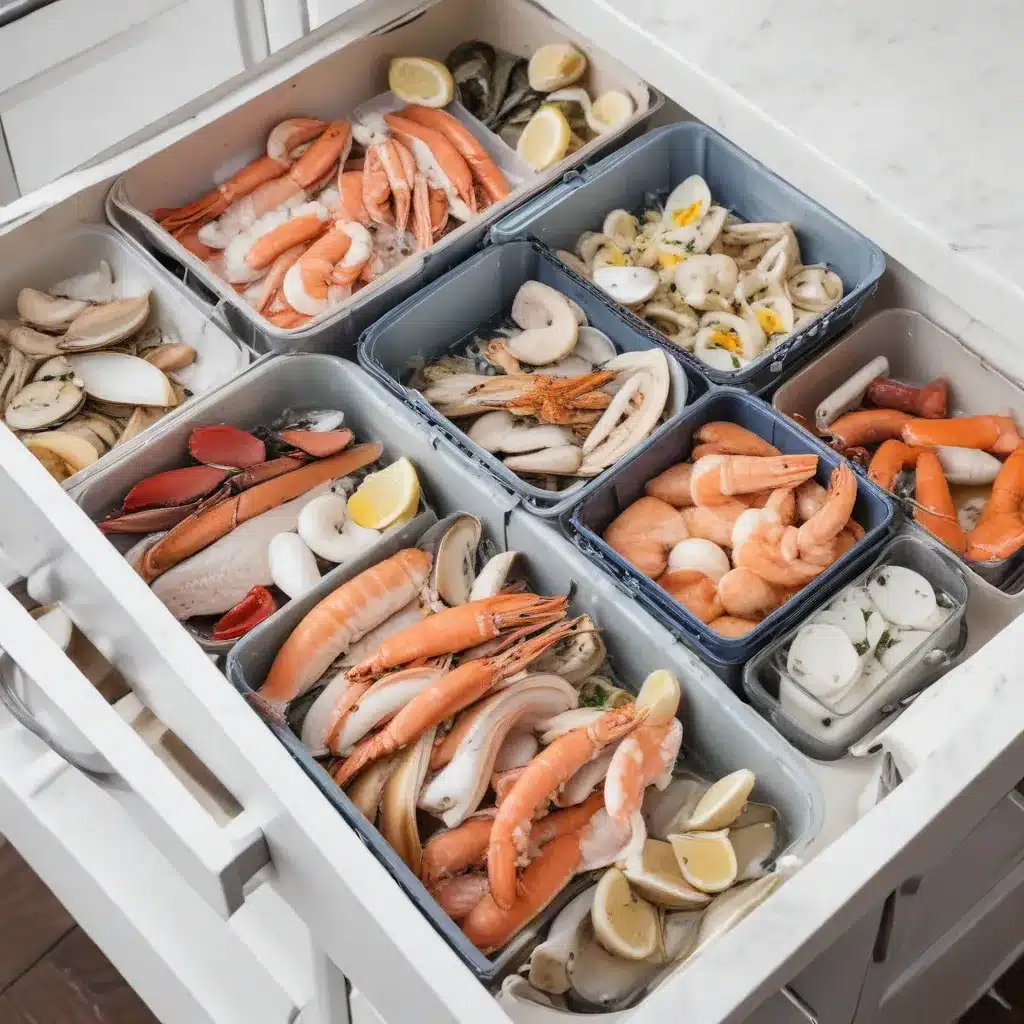
Proper Refrigeration Techniques
The key to seafood perfection starts with proper storage. When it comes to cod or any other fish and shellfish, temperature control is paramount. Seafood is highly perishable, so you must maintain strict cold temperatures to keep it fresh. Ideally, store cod and other finfish at 32-40°F (0-4°C). Shellfish like shrimp, scallops, and lobster need an even colder range of 28-32°F (-2 to 0°C).
To achieve these ideal conditions, keep seafood on the coldest shelf in your fridge, ideally towards the back where it’s coolest. Avoid the door, which experiences more temperature fluctuations. Seal fish and shellfish in airtight packaging or storage containers to prevent dehydration. For extra protection, place a small bowl of ice underneath the seafood. This “mini-cooler” effect helps maintain that critical chill.
Freezing for Long-Term Preservation
When you need to keep seafood for longer periods, the freezer becomes your best friend. Cod, salmon, tuna, and other finfish can be frozen for 3-6 months. Shrimp, scallops, and lobster can last 6-12 months in the freezer. To freeze seafood properly:
- Remove as much air as possible from the packaging, using a vacuum sealer or the water displacement method. Excess air leads to freezer burn.
- Label packages with the contents and date. This helps you rotate your stock and prevents waste.
- Freeze seafood flat if possible, so it’s easy to stack and store efficiently.
- Thaw frozen items in the refrigerator, not at room temperature, to maintain food safety.
Monitoring Freshness Indicators
Even with ideal storage, it’s crucial to check for signs of spoilage. For cod, look for bright, firm flesh, clear eyes, and a fresh ocean aroma. Shellfish should have tightly closed, unbroken shells. Any cracked, chipped, or open shells are a red flag.
If you notice discoloration, sliminess, or an off odor, toss the seafood. It’s not worth the risk. Pay close attention to expiration dates, and remember that seafood has a much shorter shelf life than other proteins. Use it or freeze it within 1-2 days of purchase for the best quality and food safety.
Cleaning and Deveining Shrimp
Properly prepping shrimp is a breeze with a little know-how. First, remove the shells, leaving the tail on for presentation if desired. Then, use a sharp paring knife to make a shallow cut down the back of the shrimp. This allows you to easily remove the dark vein, a digestive tract that can have an unpleasant gritty texture.
Filleting Fish with Precision
When it comes to cod or other finfish, the fillet is the star of the show. To prepare a perfect fillet, start by scaling the fish. Then, make a shallow cut along the belly and down the center of the fish. Gently work your knife along the bones to release the fillet in one clean piece. Discard the skin, bones, and any stray pin bones.
Thawing Frozen Seafood Safely
Whether you’re working with frozen cod, shrimp, or scallops, proper thawing is crucial. The best method is to transfer the seafood to the refrigerator and let it thaw gradually over 12-24 hours. This slow, controlled process preserves texture and flavor. Avoid thawing at room temperature, which can allow bacterial growth.
Temperature Control During Storage
Maintaining the right temperatures, both in the fridge and freezer, is essential for seafood preservation. Use an appliance thermometer to verify your refrigerator stays between 32-40°F (0-4°C). For the freezer, aim for 0°F (-18°C) or below. Frequent door opening, overstocking, and malfunctioning equipment can all disrupt these critical temperature ranges.
Packaging and Labeling Practices
Airtight packaging is a must for seafood storage, whether fresh or frozen. Opt for resealable plastic bags, vacuum-sealed pouches, or rigid containers. Be sure to label each package with the contents and date. This makes it easy to practice FIFO (first-in, first-out) rotation and ensures you use the oldest items first.
Rotation and Shelf Life Awareness
Proper rotation is key to minimizing waste and ensuring the freshest seafood. For fresh items, follow the 1-2 day rule – use or freeze within 1-2 days of purchase. Frozen seafood has a longer shelf life of 3-12 months, depending on the type. Keep a running inventory and always put new items behind older ones to maintain freshness.
Grilled Marinated Salmon
One of the best ways to enjoy cod or salmon is with a simple marinade and the smoky char of the grill. Combine olive oil, lemon juice, garlic, and herbs in a resealable bag. Add the fish, seal, and marinate for 30 minutes to 1 hour. Grill over medium-high heat for 6-8 minutes per side, until opaque and flakey.
Baked Stuffed Lobster Tails
For an elegant surf-and-turf, try baked stuffed lobster tails. Split the tails in half lengthwise and arrange on a baking sheet. Top each half with a savory breadcrumb-and-herb stuffing. Bake at 400°F (200°C) for 12-15 minutes until the lobster is cooked through and the topping is golden brown.
One-Pot Seafood Bouillabaisse
Capture global flavors with a one-pot seafood bouillabaisse. Sauté onions, garlic, and fennel in olive oil. Add white wine, tomatoes, saffron, and a seafood mix of cod, shrimp, mussels, and clams. Simmer until the shellfish have opened and the fish is cooked through. Serve with crusty bread for sopping up the flavorful broth.
Whether you’re a seafood connoisseur or just getting started, following these storage and prep tips will ensure you always have delicious, high-quality seafood at the ready. From the perfect cod fillet to an impressive lobster bake, your kitchen prowess will shine. Unlock the full potential of your ingredients with these foolproof techniques. Seafood success is just a few chilled steps away!

